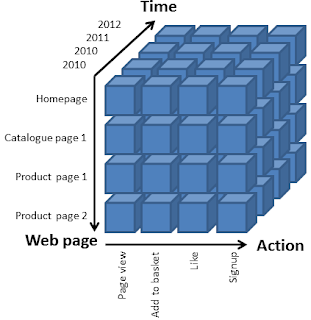CUSTOMER RELATIONSHIP MANAGEMENT (SCM)
Today, most competitors are simply a mouse-click away, and this intense competition is forcing firms to switch from sales-focused business strategies to customer-focused business strategies. Customers are one of a firm’s most valuable assets, and building strong loyal customer relationship is a key competitive advantage.
CRM is means of managing all aspect of a customer’s relationship with a an organization to increase customer loyalty and retention and an organization’s profitability.
CRM is means of managing all aspect of a customer’s relationship with a an organization to increase customer loyalty and retention and an organization’s profitability.
CRM enables an organization to :
- - Provide better customer service
- - Make call centers more efficient
- - Cross sell products more effectively
- - Help sales staff close deals faster
- - Simplify marketing and sale processes
- - Discover new customers
- - Increase customer revenues
Organizations can find their most valuable customers through “RFM” Recency, Frequency, Monetary value
• How recently a customer purchased items ( RECENCY )
• How frequently a customer purchased items ( FREQUENCY )
• How much a customer spends on each ( MONETARY VALUE )
• How recently a customer purchased items ( RECENCY )
• How frequently a customer purchased items ( FREQUENCY )
• How much a customer spends on each ( MONETARY VALUE )
THE EVOLUTION OF CRM
• CRM reporting technology – help organizations identify their customer across other applications
• CRM analysis technologies – help organizations segment their customers into categories such as best and worst customers
• CRM predicting technologies – help organizations make predictions regarding customer behavior such as which customers are at risk of leaving
Three phases in the evolution of CRM include reporting, analyzing and predicting
THE UGLY SIDE OF CRM
Identify the primary forces driving the explosive growth of customer relationship management:
- The primary forces driving the explosive growth of CRM include Automation/ Productivity/ Efficiency, Competitive Advantage, Customer Demand / Requirements, Increase Revenues, Decrease Costs, Customer Support, Inventory Control, Accessibility
Forecasts for CRM Spending ( in billions )
Compare operational and analytical customer relationship management:
• Operational CRM – supports traditional transaction processing for day-to-day font-office operations or systems that deal directly with the customers. For example, marketing, shipping.
• Analytical CRM – supports back office operations and strategic analysis and includes all systems that do not deal directly with the customers.
The primary difference between operational CRM and analytical CRM is the direct interaction between the organization and its customers
OPERATIONAL CRM AND ANALYTICAL CRM
• Analytical CRM – supports back office operations and strategic analysis and includes all systems that do not deal directly with the customers.
The primary difference between operational CRM and analytical CRM is the direct interaction between the organization and its customers
OPERATIONAL CRM AND ANALYTICAL CRM
Define the relationship between decision making and analytical customer relationship management:
- Analytical CRM solutions are designed to dig deep into a company’s historical customer information and expose patterns of behavior on which a company can capitalize. Analytical CRM is primarily used to enhance and support decision making and works by identifying patterns in customer information collected form the various operational CRM systems.
CUSTOMER RELATIONSHIP MANAGEMNET SUCCESS FACTORS
- CRM success factors include:
- Clearly communicate the CRM strategy
- Define information needs and flows
- Build an integrated view of the customer
- Implement in iterations- avoid big-bang approach
- Scalability for organization growth




























